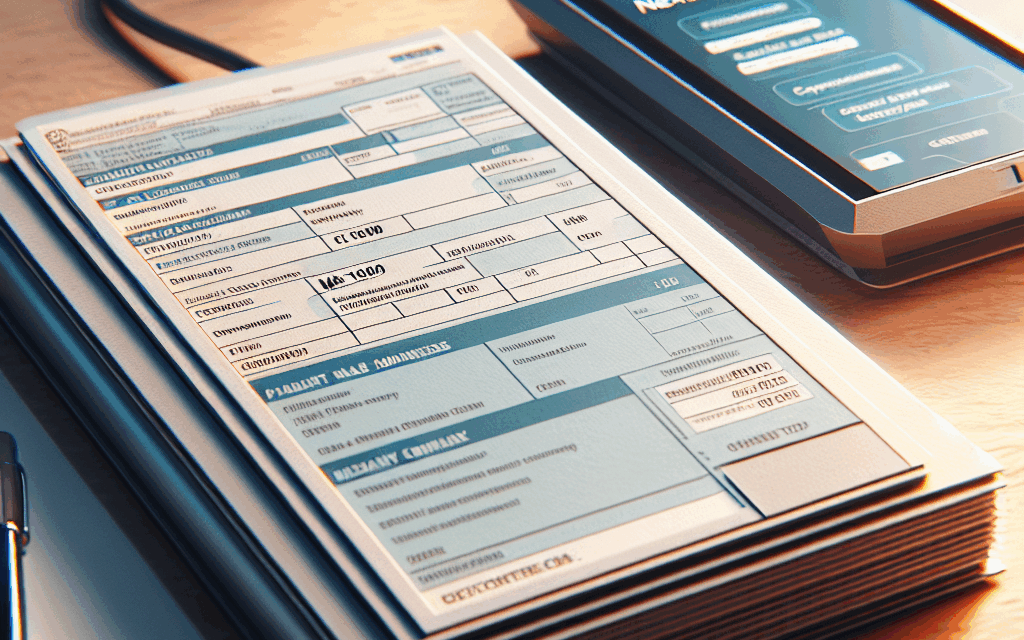Understanding the CMS 1500 Form with Nextech
The CMS 1500 form is a critical document in the healthcare billing process, serving as a standardized claim form used by healthcare providers to bill for services rendered to patients. Understanding this form is essential for healthcare professionals, billing specialists, and administrative staff. In this article, we will explore the CMS 1500 form in detail, particularly in the context of using Nextech, a leading practice management software. We will cover its purpose, structure, common challenges, and how Nextech can streamline the billing process. This comprehensive guide will provide valuable insights for anyone involved in healthcare billing.
1. The Purpose of the CMS 1500 Form
The CMS 1500 form, also known as the HCFA 1500 form, is primarily used by non-institutional providers to submit claims for reimbursement from Medicare, Medicaid, and private insurers. Understanding its purpose is crucial for ensuring accurate and timely payments.
Here are some key purposes of the CMS 1500 form:
- Standardization: The CMS 1500 form provides a standardized format for submitting claims, which helps reduce errors and streamline the billing process.
- Documentation: It serves as a record of the services provided, including diagnosis codes, procedure codes, and patient information, which are essential for reimbursement.
- Compliance: Using the CMS 1500 form ensures compliance with federal regulations and payer requirements, reducing the risk of claim denials.
- Tracking: The form allows healthcare providers to track claims and payments, facilitating better financial management.
- Communication: It acts as a communication tool between healthcare providers and payers, detailing the services rendered and justifying the need for reimbursement.
In summary, the CMS 1500 form is vital for healthcare providers to receive payment for their services. Its standardized format and comprehensive documentation help ensure compliance and facilitate communication with payers.
2. Structure of the CMS 1500 Form
The CMS 1500 form consists of various sections that capture essential information about the patient, provider, and services rendered. Understanding the structure of the form is crucial for accurate completion and submission.
The form is divided into several sections, each with specific fields:
- Patient Information: This section includes the patient’s name, address, date of birth, and insurance information. Accurate patient details are essential for processing claims.
- Provider Information: This section captures the provider’s name, National Provider Identifier (NPI), and address. It is crucial for identifying the healthcare provider submitting the claim.
- Diagnosis Codes: This section allows providers to list the diagnosis codes that justify the services rendered. Accurate coding is essential for reimbursement.
- Procedure Codes: Providers must enter the procedure codes that correspond to the services provided. This section is critical for determining the payment amount.
- Billing Information: This section includes details about the billing provider, including their NPI and tax identification number (TIN). It ensures that payments are directed to the correct entity.
Each section of the CMS 1500 form plays a vital role in the claims process. Accurate completion of these fields is essential to avoid claim denials and ensure timely reimbursement.
3. Common Challenges in Completing the CMS 1500 Form
Completing the CMS 1500 form can be challenging for healthcare providers and billing specialists. Understanding these challenges can help mitigate errors and improve the claims process.
Some common challenges include:
- Complex Coding: The use of ICD-10 and CPT codes can be complex, and errors in coding can lead to claim denials. Providers must stay updated on coding changes and guidelines.
- Incomplete Information: Missing or incorrect patient or provider information can result in claim rejections. It is essential to double-check all entries before submission.
- Payer-Specific Requirements: Different payers may have specific requirements for claim submissions. Providers must be aware of these requirements to avoid denials.
- Timeliness: Submitting claims within the required time frame is crucial for reimbursement. Delays can result in lost revenue.
- Technology Issues: Technical difficulties with billing software can hinder the claims process. Providers must ensure their systems are functioning correctly.
By understanding these challenges, healthcare providers can take proactive steps to improve their claims process, such as investing in training for staff and utilizing technology effectively.
4. How Nextech Streamlines the CMS 1500 Process
Nextech is a leading practice management software designed to streamline the healthcare billing process, including the completion and submission of the CMS 1500 form. Understanding how Nextech can enhance this process is essential for healthcare providers.
Here are several ways Nextech improves the CMS 1500 process:
- Automated Data Entry: Nextech automates data entry by pulling information directly from patient records, reducing the risk of human error and saving time.
- Integrated Coding Tools: The software includes integrated coding tools that help providers select the correct ICD-10 and CPT codes, ensuring compliance and accuracy.
- Real-Time Eligibility Verification: Nextech allows providers to verify patient insurance eligibility in real-time, reducing the likelihood of claim denials due to coverage issues.
- Claim Tracking: The software provides tools for tracking claims throughout the submission process, allowing providers to monitor the status of their claims and follow up as needed.
- Reporting and Analytics: Nextech offers reporting and analytics features that help providers analyze their billing performance, identify trends, and make data-driven decisions to improve revenue cycle management.
By leveraging Nextech’s capabilities, healthcare providers can streamline their billing processes, reduce errors, and improve their overall financial performance.
5. Best Practices for Completing the CMS 1500 Form
Completing the CMS 1500 form accurately is essential for ensuring timely reimbursement and minimizing claim denials. Here are some best practices to follow:
- Thorough Training: Ensure that all staff involved in billing and coding receive thorough training on the CMS 1500 form and relevant coding guidelines.
- Double-Check Information: Always double-check patient and provider information for accuracy before submission. Small errors can lead to significant delays in payment.
- Stay Updated on Coding Changes: Regularly review updates to ICD-10 and CPT codes to ensure compliance and accuracy in coding.
- Utilize Technology: Leverage practice management software like Nextech to automate data entry, verify eligibility, and track claims effectively.
- Establish a Follow-Up Process: Implement a follow-up process for tracking claims and addressing any denials or issues promptly.
By following these best practices, healthcare providers can enhance their billing processes, reduce errors, and improve their revenue cycle management.
Conclusion
The CMS 1500 form is a vital component of the healthcare billing process, serving as a standardized claim form for reimbursement from various payers. Understanding its purpose, structure, and common challenges is essential for healthcare providers and billing specialists. By leveraging technology like Nextech, providers can streamline their billing processes, reduce errors, and improve their overall financial performance.
In summary, mastering the CMS 1500 form and utilizing effective practice management software can significantly enhance the efficiency of healthcare billing. By implementing best practices and staying informed about coding changes and payer requirements, healthcare providers can ensure timely reimbursement and maintain a healthy revenue cycle.





